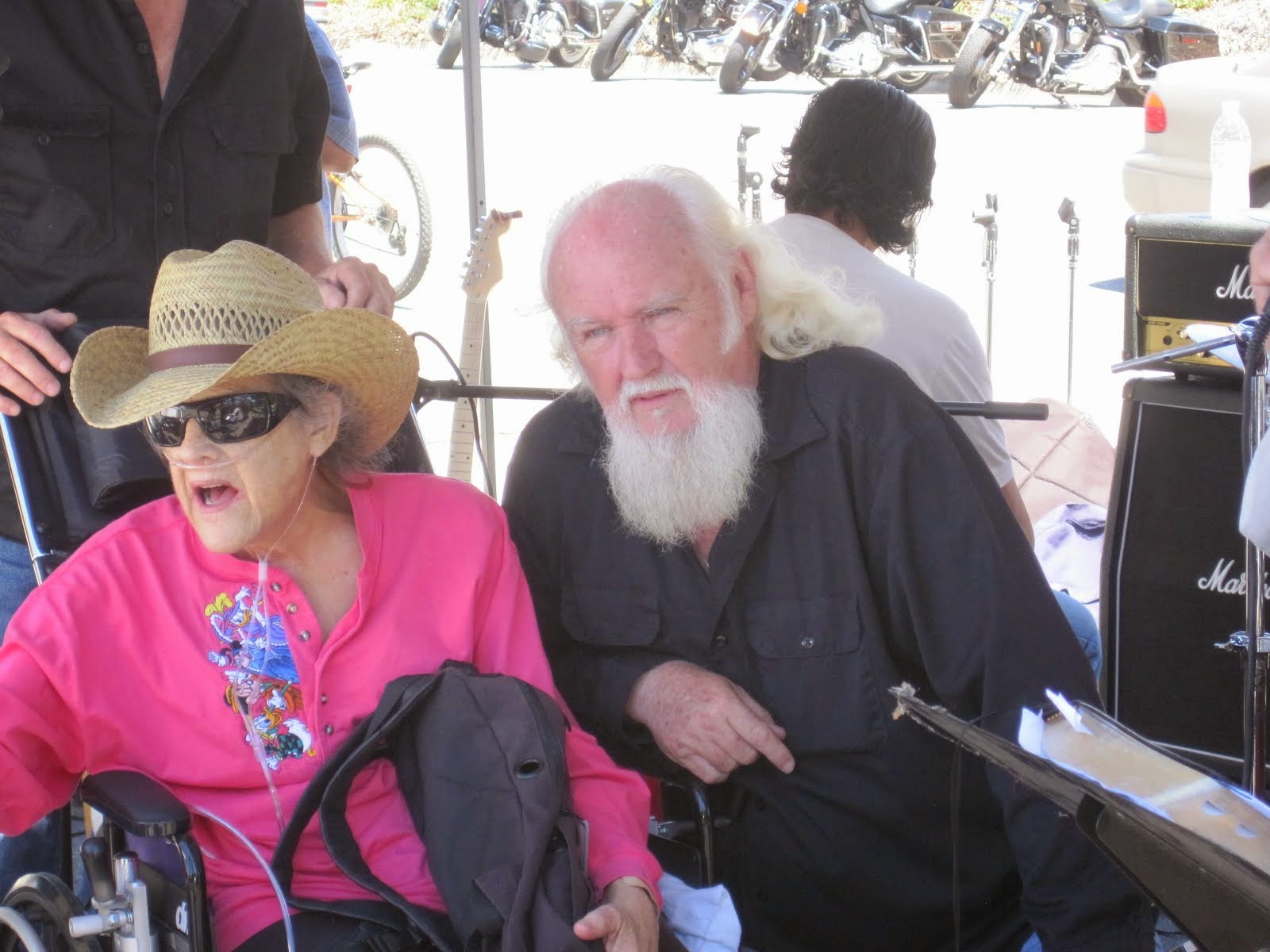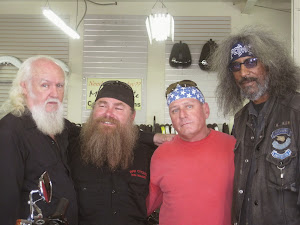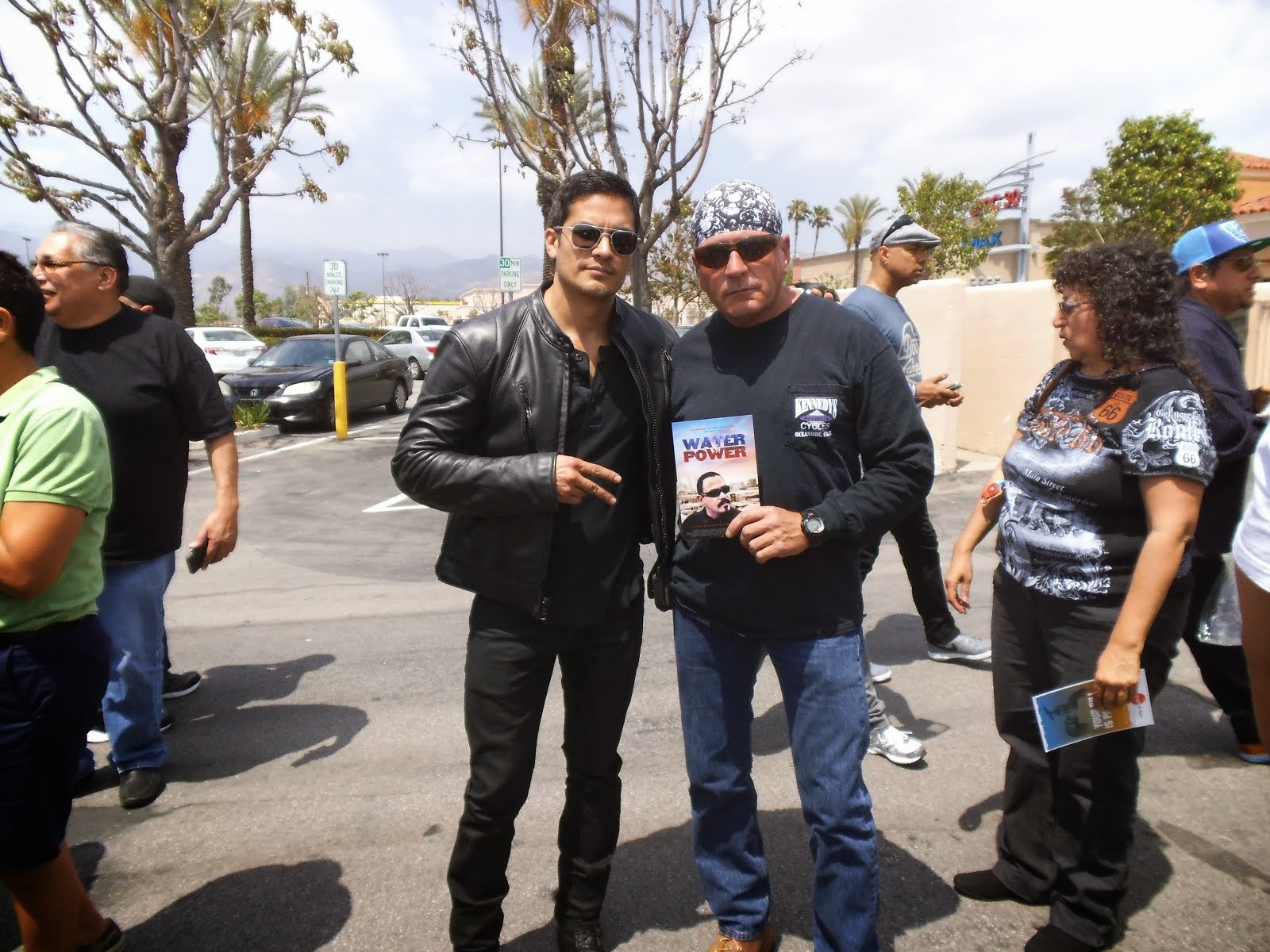OFF THE WIRE
http://channahon-minooka.patch.com/articles/new-law-provides-for
New Law Will Give Motorcyclists Another Option
Law is aimed at letting motorcyclists and bicyclists proceed through a red light when it is not prompted to change.
By Dawn Aulet
With the warm weather anticipated this weekend, it is possible that motorcycle riders will dig their bikes out of storage to take advantage of our mild winter. And, if they do, they have a new law to contend with – one that will allow them to proceed with caution through an intersection if a stoplight fails to turn green. That law states that must happen “within a reasonable period of time” due to a signal malfunction or simply because the vehicle does not weigh enough to set off ground sensors.
Brian Wendholt, legislative officer for Will County A.B.A.T.E., said motorcycle enthusiasts have been pushing for a similar law for quite some time.
“It’s something I’ve been complaining about, and a lot of members have too, for years and years,” Wendholt said.
Under the new law, “When a motorcycle comes up to a red light or a left-turn arrow and sits there and the censors do not recognize that the bike is there, they can proceed as if through a four-way stop,” he explained.
According to its website, A.B.A.T.E., which stands for “A Brotherhood Aimed Toward Education,” strives to “preserve the universal right to a safe, unrestricted motorcycling environment.”
In both Channahon and Minooka, police are concerned that the new law could potentially be harmful.
“I’m just concerned that the motorcyclists need to use extra care before going through the red light to make sure there is no traffic,” Channahon Deputy Chief Wold said.
He added that he does not anticipate any trouble, but is concerned for the safety of motorcyclists.
Minooka Police Chief Justin Meyer said he is concerned the law will be abused.
“I see where they’ve come up with that new law, I understand, but on the safety side, I don’t agree with it,” he said. “I think motorcycles will take advantage of the new law.”
Meyer said he is not aware of any complaints that have come through the village from riders who have been stuck at various lights. But in Channahon, people have called to alert police.
“We do get a lot of people that will call and say that light did not turn for me and I was on a motorcycle,” Wold said.
Both departments also expressed a need to educate the public that the law does not apply to drivers in cars.
“I hope drivers in cars know that motorcyclists are allowed to do this and they don’t follow them through the light,” Wold said.
And Meyer expressed similar concerns.
“It’s like everything, any new law that comes out, all we have to do is educate the community about this new law and hopefully they will understand it,” he said.
Law Not Valid Everywhere The new law, House Bill 2860 went into effect on January 1, but it is not valid everywhere. The legislation does not apply to the city of Chicago, stipulating that the rule is effective only in communities with fewer than two million residents. The law was vetoed by Gov. Pat Quinn, but the Illinois House and Senate overrode that veto in November.
Law enforcement concerns were not limited to Channahon and Minooka as others in law enforcement opposed the law, citing safety concerns. However, Wendholt said the intent is for motorcyclists to use the legislation to safely proceed through intersections only when no other traffic is present.
“You can’t do it at an intersection controlled by a timer, and the police will learn which intersections are which really quick,” Wendholt added.
Although neither Channahon nor Minooka’s police chiefs are motorcycle riders, Romeoville Assistant Police Chief Steven Lucchesi rides. He has a unique perspective on the new law.
“I’ve ridden motorcycles most of my adult life and I’ve had the same problem from time to time,” he said of ground sensors failing to register the presence of motorcycles.
“When it would happen to me, I would go ahead and make a legal right turn and then make a legal U-turn,” Lucchesi added. “At the same time, as a motorcycle rider, I understand that it is an inconvenience when it’s 2 o’clock in the morning and you’ve been sitting there for five minutes.”
Raising Awareness in the Community Wendholt said A.B.A.T.E. is working to educate its members about the law works. The organization’s website offers a printable version of the bill that riders can carry with them in case they’re pulled over.
“That way, if a rider is pulled over, he can very politely show it to the officer,” Wendholt said. “This is not to wave it in the face of [the police].”
Even so, Wendholt said he realizes other drivers may not be familiar with the new law.
“I’m sure there are going to be people who aren’t aware of it who are going to be calling the police” to report motorcycle riders, Wendholt said.
Vague Law? In August, the governor attempted to veto the bill, pushing for an amendment that would have specified how long bicyclists and motorcycle riders must wait at a red light before proceeding through the intersection.
According to Wendholt, that’s something A.B.A.T.E. can get behind.
Senate Bill 2528 has been introduced in the Senate that could give motorcycle riders a specific guideline on how long is long enough to wait before proceeding through a clear intersection.
“The bill as written doesn’t specify a time,” Wendholt said. “The trailer bill states that you must wait 120 seconds.”
Lucchesi also thought the law, as written, is “a little vague.”
“[The law] does not provide for a motorcyclist to pull up to a light and just go if it’s clear,” he said, emphasizing that riders must wait before proceeding through the intersection. “The motorcycle has to be there a while.”
skip to main |
skip to sidebar




Bill & Annie

Art Hall & Rusty


NUFF SAID.......


































































OOHRAH

ONCE A MARINE,ALWAYS A MARINE

GIVING BACK


MOUNT SOLEDAD














BIKINI BIKE WASH AT SWEETWATER










FRIENDS





BILL,WILLIE G, PHILIP










GOOD FRIENDS


hanging out

brothers


GOOD FRIENDS

Good Friends

Hanging Out




Bill & Annie
Art Hall & Rusty
Art Hall & Rusty


NUFF SAID.......



















NUFF SAID......



























Mount Soledad




BALBOA NAVAL HOSPITAL
RUSTY DANNY

ANNIE KO PHILIP

PHILIP & ANNIE

OUT & ABOUT

OOHRAH...

OOHRAH
ONCE A MARINE,ALWAYS A MARINE

ONCE A MARINE,ALWAYS A MARINE
American Soldier Network GIVING BACK

GIVING BACK
CATHY & BILL
PHILIP & DANNY & BILL

MOUNT SOLEDAD
bills today
EMILIO & PHILIP
WATER & POWER
WATER & POWER
bootride2013



BIKINI BIKE WASH AT SWEETWATER







ILLUSION OPEN HOUSE

FRIENDS


GOOD FRIENDS



BILL,WILLIE G, PHILIP









GOOD FRIENDS

GOOD FRIENDS
Friends
- http://www.ehlinelaw.com/losangeles-motorcycleaccidentattorneys/
- Scotty westcoast-tbars.com
- Ashby C. Sorensen
- americansoldiernetwork.org
- blogtalkradio.com/hermis-live
- davidlabrava.com
- emiliorivera.com/
- http://kandymankustompaint.com
- http://pipelinept.com/
- http://womenmotorcyclist.com
- http://www.ehlinelaw.com
- https://ammo.com/
- SAN DIEGO CUSTOMS
- www.biggshd.com
- www.bighousecrew.net
- www.bikersinformationguide.com
- www.boltofca.org
- www.boltusa.org
- www.espinozasleather.com
- www.illusionmotorcycles.com
- www.kennedyscollateral.com
- www.kennedyscustomcycles.com
- www.listerinsurance.com
- www.sweetwaterharley.com

Hanging out

hanging out
Good Friends

brothers
GOOD FRIENDS

EMILIO & SCREWDRIVER

GOOD FRIENDS
Danny Trejo & Screwdriver

Good Friends
Navigation
Welcome to Bikers of America, Know Your Rights!
“THE BIKERS OF AMERICA, THE PHIL and BILL SHOW”,
A HARDCORE BIKER RIGHTS SHOW THAT HITS LIKE A BORED AND STROKED BIG TWIN!
ON LIVE TUESDAY'S & THURDAY'S AT 6 PM P.S.T.
9 PM E.S.T.
CATCH LIVE AND ARCHIVED SHOWS
FREE OF CHARGE AT...
BlogTalkRadio.com/BikersOfAmerica.
Two ways to listen on Tuesday & Thursday
1. Call in number - (347) 826-7753 ...
Listen live right from your phone!
2. Stream us live on your computer: http://www.blogtalkradio.com/bikersofamerica.
A HARDCORE BIKER RIGHTS SHOW THAT HITS LIKE A BORED AND STROKED BIG TWIN!
ON LIVE TUESDAY'S & THURDAY'S AT 6 PM P.S.T.
9 PM E.S.T.
CATCH LIVE AND ARCHIVED SHOWS
FREE OF CHARGE AT...
BlogTalkRadio.com/BikersOfAmerica.
Two ways to listen on Tuesday & Thursday
1. Call in number - (347) 826-7753 ...
Listen live right from your phone!
2. Stream us live on your computer: http://www.blogtalkradio.com/bikersofamerica.
Good Times
Hanging Out

Key Words
- about (3)
- contact (1)
- TENNESSEE AND THUNDER ON THE MOUNTAIN (1)
- thinking (1)
- upcoming shows (2)
Blog Archive
-
▼
2012
(4602)
-
▼
January
(463)
- Graffiti Philosophy
- AUSTRALIA - SA to bolster anti-bikie laws within ...
- CANADA - Jeffrey Lynds death investigation continu...
- USA - Healing soldiers, one dog at a time.. Kudos ...
- AUSTRALIA - Editorial: Words are not enough to su...
- AUSTRALIA - Police want Bandidos member Ricky Ste...
- Netherlands - Dutch government gets tough with 'o...
- US - The Caging of America...
- AUSTRALIA - Police say anti-bikie laws are our be...
- AUSTRALIA - OMCG member and associate charged wit...
- Police swarm dealership after tension rises betwee...
- Actually yes, ignorance of the law is an excuse...
- U.S. - The Caging of America....
- ILLINOIS - “HB0930 is a "No Profiling" bill to sto...
- Nude Nuns with Big Guns (Blu-ray)
- AUSTRALIA - Bounty on renegade Comanchero Focarel...
- CHECK THIS OUT!! AZ'S BEING SUED BY OBAMA!!
- AUSTRALIA - First direct arrests in Sydney shooti...
- Canada - SPEARFISH, SD - Spearfish Police Prep For...
- AUSTRALIA - Focarelli silent on SA bikie shooting..
- AUSTRALIA - Chopper tells Troy, 'have my kidney'...
- AUSTRALIA - Comanchero member Giovanni Focarelli ...
- Maine Bill Targeting Gangs Raises Civil Liberties ...
- The Power of the American Biker Culture..Bikers ar...
- NEW HAMPSHIRE - Don’t Stop Recording: Meet James B...
- UNITED STATES - Quick Facts: 26 Signs that the Uni...
- You may have noticed that most Harley-Davidson’s h...
- CALIFORNIA - Map of Bay Area on Facebook offends s...
- CALIFORNIA - EXCLUSIVE: Gang bust gives rare glimp...
- Just Say “NO!!” 4th & 14th Amendments....
- AUSTRALIA - Push to ban bikie after club incidents
- Judiciary committee hears about gangs, including ...
- Photography Is Not Confusing!
- FOX bows to presidential power...
- South Dakota - Hells Angels involved in stabbing c...
- LITCHFIELD - Campbell trial wraps up: Prosecution ...
- Missouri - St. Louis - Thomas Bailey, Maurice Thom...
- Australia - State anxious to introduce 'usable' an...
- CANADA - Alleged biker hitman dies in cell..
- USA - Vets make prison gang list..
- NEVEDA - Biker bar arsonist wants out....
- CALIFORNIA - Police officer shot, killed by fellow...
- St. Louis hosting 1st big parade on Iraq War's end...
- NEW JERSEY - Police to Provide Security at Westbor...
- Welcome to the Road Guardians Compound in Big Bend...
- AUSTRALIA - Man shot in the leg as gunfire erupts...
- CANADA - Sturgis North catches eye of Vernon RCMP
- CANADA - Hells Angels likely to attend huge motor...
- AUSTRALIA - Gun victims won't talk to cops, THEY...
- PETITION TO SUPREME COURT OF ALASKA TO BLOCK NDAA ...
- AUSTRALIA - Finks bikie pleads guilty to drug cha...
- DEPARTMENT OF DEFENSE SLASHES STAFF IN WOUNDED WAR...
- Is this the beginning of mandating "high visibilit...
- This is a fun quiz. Listed below are 10 direct quo...
- Los Angeles Co., CA - Section 8 settlement details
- Sometime secrets make the best fertilizer..........
- Canada - Hells Angels at Okanagan biker rally rais...
- US - Group adds POW-MIA flags at some county facil...
- VIRGINIA - bill advances to ban motorcycles-only c...
- Search: Cops: 4-year-old boy pulls out pot at snac...
- Can a Police Officer Enter a Home Without a Warrant?
- CHARLESTON, W.Va. - Convicted felon running for Li...
- Va. bill would ban motorcycles-only checkpoints. ...
- Made in the USA.............
- Bartow, Fla., to Board of Directors
- WIREMILITARY: Discharged with low disability ratin...
- SAN DIEGO REGION - CHP to target distracted teen ...
- No title
- The U.S. House of Representatives: Pass H.R. 111
- No title
- No title
- How SEAL Team 6 rescued hostages from Somalia
- New Hampshire - Bill would let some felons have guns
- COLORADO - 6 More Alleged Members Of Motorcycle Ga...
- LITCHFIELD - Kevin Campbell trial: Judge denies de...
- Vermont - Police: Gang task force needed........
- Israel's Rosa Parks
- Albany, New York - GoodCop, BadCop
- ILLINOIS - man call 911 fight a cop..
- CALIFORNIA - Fury erupts over bikie 'war' claims
- AUSTRALIA - Mercanti's health 'deteriorated signif...
- Albany, New York - B.A.D. Rises from the Dead!
- CALIFORNIA - PFINGSTEN: ‘100 Bikes for Josiah' tur...
- MASSACHUSETTS - Please review and forward to those...
- U.S. - Need a new cell phone ?
- 5th generation fighter planes !
- Sniffer Dog Case to Hit Supreme Court
- LISTER INSURANCE AT THE BOSTON BIKE SHOW THIS WEEK...
- COLORADO - Judge Orders Defendant to Decrypt Laptop..
- AUSTRALIA - Wounded bikie boss Toby Mitchell out...
- EAST HAVEN, Conn. - FBI arrests 4 officers in trou...
- The New Federal Cellular Phone Bill, effective Jan...
- AUSTRALIA - Government priority to crack down on b...
- OBAMA AT IT AGAIN..
- From Rogue, As I look through the Abate of Florida...
- Interesting story. victim stuck with bills due to ...
- CALIFORNIA - George Christie Trial Postponed
- Supreme Court rules on GPS tracking, but punts on ...
- ILLINOIS - New Law Lets Motorcycles and Bikes Run ...
- Asumati Street Tracker
-
▼
January
(463)
Bikers of America, Know Your Rights!... Brought to you by Phil and Bill
Philip, a.k.a Screwdriver, is a proud member of Bikers of Lesser Tolerance, and the Left Coast Rep
of B.A.D (Bikers Against Discrimination) along with Bill is a biker rights activist and also a B.A.D Rep, as well, owner of Kennedy's Custom Cycles
